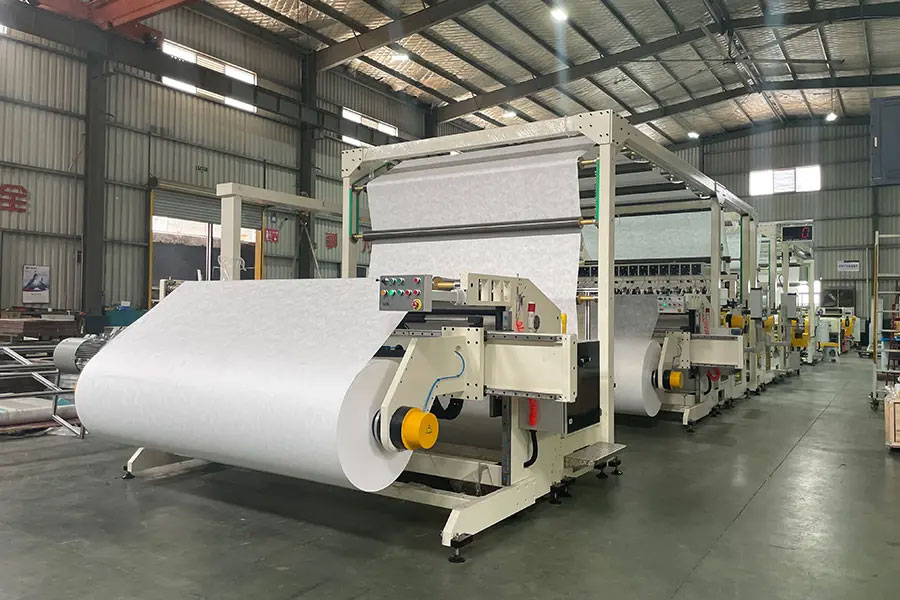PE (Polyethylene) laminated fabrics are revolutionizing manufacturing across various industries due to their durability, flexibility, and excellent barrier properties. These fabrics offer an effective solution for applications that require waterproofing, moisture resistance, and contamination protection. In this guide, we explore the role of PE laminated fabrics in manufacturing, their applications, benefits, and key considerations.
What Are PE Laminated Fabrics?
PE laminated fabrics are composite materials created by bonding polyethylene film to a fabric base using adhesive or heat lamination techniques. This combination enhances the fabric’s strength, durability, and barrier properties, making it suitable for a wide range of industrial applications.
Key Features of PE Laminated Fabrics
- Waterproof: Provides an impermeable barrier against water and other liquids.
- Moisture Resistance: Prevents moisture vapor transmission, maintaining product integrity.
- Durability: Offers high tensile strength and tear resistance.
- Contamination Protection: Creates a sealed surface that protects against dust, dirt, and contaminants.
- Versatility: Can be customized with various base fabrics and laminations to meet specific requirements.
Applications of PE Laminated Fabrics in Manufacturing
- Packaging
- Use Cases: Food packaging bags, product wraps, barrier liners.
- Benefits: Provides moisture resistance and contamination protection to keep products fresh and safe during transportation and storage.
- Medical Supplies
- Use Cases: Surgical drapes, gowns, and patient sheets.
- Benefits: Ensures fluid resistance, hygiene, and sterility, which are critical in healthcare settings.
- Construction Materials
- Use Cases: Waterproofing membranes, tarpaulins, and protective covers for building materials.
- Benefits: Shields materials from rain, UV exposure, and environmental damage.
- Industrial Applications
- Use Cases: Protective clothing, dust covers for machinery, and chemical-resistant barriers.
- Benefits: Safeguards workers and equipment in harsh environments.
- Household Products
- Use Cases: Diapers, incontinence pads, and absorbent products.
- Benefits: Leak-proof and durable, ensuring product efficiency and reliability.
Key Benefits of PE Laminated Fabrics
- Waterproofing and Moisture Resistance
- Acts as a reliable barrier against water, ensuring the protection of sensitive materials.
- Prevents moisture ingress, enhancing the longevity of packaged goods.
- Enhanced Durability
- Withstands wear and tear, making it suitable for demanding applications.
- Resistant to chemicals, corrosion, and environmental stress.
- Cost-Effectiveness
- Provides a long-lasting and affordable solution for industries looking to reduce material waste.
- Customizability
- Can be tailored to meet specific needs, such as varying thickness, width, and barrier properties.
Types of PE Laminated Fabrics
| Type | Best Use | Features | Price Range (₹) |
| PE Film Laminated SMS | Medical gowns, drapes, and hygiene products | Lightweight, waterproof, fluid-resistant | 200 – 500 |
| PE Laminated Woven Fabric | Construction tarpaulins, packaging | Tear-resistant, UV-stabilized | 400 – 900 |
| PE Laminated Non-Woven Fabric | Surgical masks, isolation gowns, and protective wear | Breathable, soft, durable | 300 – 700 |
| PE Laminated PP Fabric | Industrial covers, agricultural tarpaulins | Chemical-resistant, high tensile strength | 500 – 1000 |
Explore our PE laminated fabric collection to find the best options for your needs.
Important Considerations When Using PE Laminated Fabrics
1. Fabric Base Selection
Choose a suitable base fabric (woven, non-woven, or PP) based on the required flexibility, strength, and application.
2. Lamination Process
Ensure high-quality lamination techniques to achieve optimal barrier properties and durability.
3. Environmental Concerns
Consider eco-friendly alternatives or recycling options to reduce the environmental impact of PE laminated fabrics.
4. Application-Specific Requirements
Select fabrics tailored to your industry’s specific needs, such as fluid resistance for medical use or UV resistance for outdoor applications.
Challenges and Solutions in Using PE Laminated Fabrics
- Disposal and Recycling
- Challenge: PE laminated fabrics may contribute to plastic waste.
- Solution: Opt for recyclable materials and support recycling programs.
- Cost Considerations
- Challenge: Initial investment in high-quality PE laminated fabrics can be higher.
- Solution: Focus on long-term savings through durability and reduced maintenance costs.
Frequently Asked Questions (FAQs)
1. What makes PE laminated fabrics waterproof?
The polyethylene layer creates an impermeable barrier that prevents water penetration.
2. Are PE laminated fabrics environmentally friendly?
While traditional PE fabrics can have environmental implications, newer eco-friendly options and recycling initiatives are improving their sustainability.
3. Can PE laminated fabrics be customized?
Yes, they can be customized in terms of thickness, size, and barrier properties to meet specific industry needs.
4. What industries benefit the most from PE laminated fabrics?
Industries such as healthcare, construction, packaging, and agriculture rely heavily on PE laminated fabrics for their versatility and protective qualities.
5. Where can I buy high-quality PE laminated fabrics?
Explore Welpack Industries’ collection for durable and cost-effective options tailored to your needs.
Enhance Your Manufacturing Processes with PE Laminated Fabrics
PE laminated fabrics are indispensable in industries that demand durability, moisture resistance, and contamination protection. Visit Welpack Industries Pvt. Ltd. to explore our extensive range of PE laminated fabrics and contact us for customized solutions to meet your specific manufacturing requirements.



